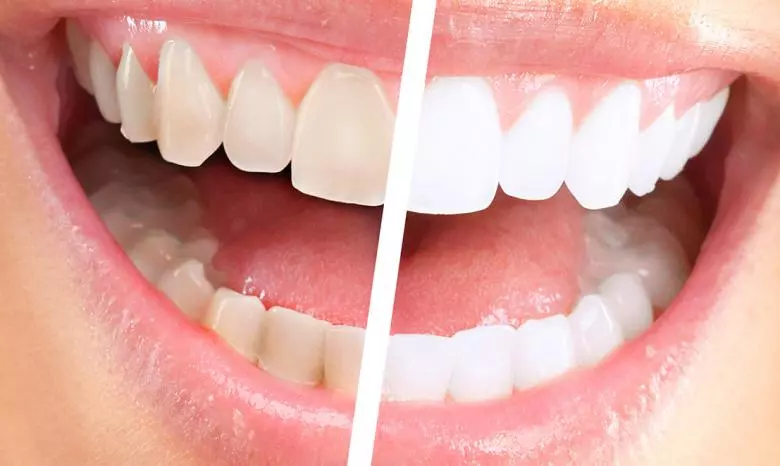Whatsapp: +90 (554) 160 5747 Online Appointment

Teeth lose their whiteness over time due to the consumption of certain foods, beverages (coffee, wine, and tea), and cigarettes. To correct this, a teeth whitening procedure can be performed. When compared with porcelain veneers, the teeth whitening procedure is easier, safer, more economical, and more protective since no tooth reduction is required. Teeth whitening does not have any drawbacks in terms of dental health.
Like eye color and hair color, tooth color is unique to each individual. The ratio of the elements within the tooth determines its color. The surface of the enamel has tiny pores invisible to the naked eye, and the tooth’s natural color can change over time due to external factors.
Yellowing and slight brown discolorations formed over time yield the best results in whitening. Dark brown or bluish-gray discolorations are more deeply rooted in the tooth’s structure and are harder to whiten. Such stains usually occur due to the use of certain antibiotics during tooth development, and more whitening sessions are required to achieve the desired result.
How many types of whitening methods are there?
There are two types of treatment methods to choose from. The first is the method performed in your dentist’s office, which produces faster results (Office bleaching). The other is the method you apply at home under your dentist’s supervision (Home bleaching).
We do not recommend patients to use ready-made trays and whitening products at home without dentist supervision, as they pose risks to the teeth and gums.
What is Home bleaching?
Home bleaching is carried out under the supervision of a dentist. During the first appointment, the dentist takes an impression of the patient’s teeth and prepares a transparent tray that fits over the teeth. This tray, used by the patient at home, allows the whitening agent to be applied to the teeth while protecting the gums.
What is Office bleaching?
The whitening procedure is typically done in a single session, but if necessary, the session can be repeated. To do this, the gums are isolated and a gel with whitening properties is applied to the teeth. Special light sources such as laser, halogen, or LED can be used to activate the gel.
Whitening usually takes one session, but depending on the patient’s natural level of whiteness, it can take up to 2-3 sessions. Each session lasts about 30 minutes to 1 hour. In the whitening process, the fluid in the tooth’s dentinal tubules is replaced by the fluid in the whitening gel, resulting in whiter teeth.
A few days after whitening, the teeth reach their final color. With home bleaching using the trays made in the dentist’s office, results are usually achieved within 1-2 weeks, depending on the gel.
Among the whitened teeth, if one tooth is darker than the others, it may have lost its vitality or undergone root canal treatment. In such cases, a whitening procedure called devital bleaching can lighten the tooth. The dentist places a whitening agent inside the tooth and changes this agent every 1-2 days until the desired result is obtained. The outcome is usually excellent and takes about one week. In this type of whitening, it generally takes a long time for the tooth color to revert to its original shade, if at all.
After the whitening procedure, patients are advised to avoid certain foods and drinks. Acidic beverages, cigarettes, tetracycline-containing medications, coffee, and wine are not recommended. Acidic beverages increase tooth sensitivity, and coffee and wine are not recommended due to their staining properties.
Endodontics is the branch of dentistry that deals with the treatment of root…
A healthy and beautiful smile gives you an advantage in many areas of life. It…
Teeth lose their whiteness over time due to the consumption of certain foods,…